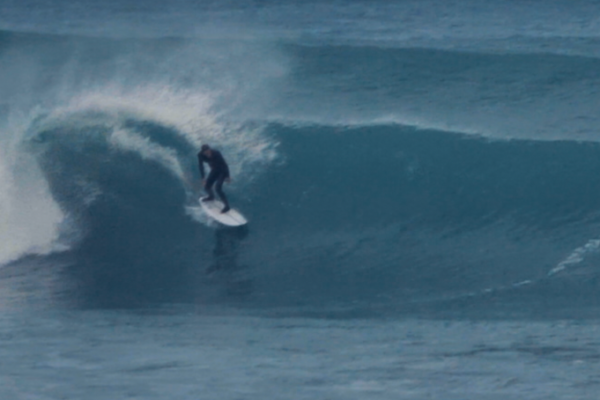Western Australian Maritime History
Shipwrecked Ceramics
The idea of objects being washed up on the littoral zone has always captivated me. The remnants of journeys carried by currents and deposited on the shores evoke intrigue and spark the imagination.
Growing up along the coast has had a profound impact on my childhood memories, especially the vivid experiences I had whilst staying in our family beach shack in Storm Bay, Augusta. I would gaze out at the vast sea, filled with wonder and a desire to be a part of its ever-changing world. Watching storms roll in became a captivating spectacle that left a lasting impression on my young mind.
In my teenage years, our family caravan became a cozy retreat situated right on the beachfront in Yallingup. It was there that I encountered fellow coastal dwellers, individuals who embraced the transient and idyllic ocean-side lifestyle.
The enchantment of beach-combing always held allure for me as a child, especially the idea of stumbling upon lost ocean treasure like a ‘message in a bottle.’ The notion that someone would write a note and entrust it to the whims of the sea, hoping for it to be found and read by another carries a sense of mystery and connection, as if the vast ocean becomes a conduit for communication between unknown individuals.
The West Australian Coastline is strewn with shipwrecks, largely attributed to the powerful Roaring Forties winds that propelled sailors across the Southern Ocean from Africa. Many of these ships failed to navigate the necessary left turn early enough to head towards Indonesia, resulting in collisions with the West Coast of Australia. As a beachcomber, I found the mystery of these shipwrecks to be an integral part of my adventures. The wrecks of The Batavia (1629), Vergulde Draeck (The Gilt Dragon – 1656) were particularly intriguing; and in more recent years, the wrecks of the Alex T. Brown (1917) and The Alkimos (1964).
Whilst completing the historical course component of my Advanced Diploma in Studio Ceramics, the enchantment of shipwrecked forms enthralled my interest and I developed a deep fascination with the unique shapes and structures of the wood-fired salt-glazed stoneware; in particular the Batavia Ship’s Bellarmine jugs (also known as Bartmann jugs) with their distinctive combination of form, colour and texture and the ‘Bearded Man’ stamp/signature. These jugs were frequently discovered aboard European ships in the 17th century, serving as containers for liquids such as water, beer, or wine. The surfaces of Bellarmine jugs exhibit textured salt-glazed finishes with an orange peel effect and warm orange hues. The forms of these jugs are well balanced, and I am particularly drawn to their swollen and spherical shapes, slender necks, and delicate feet.
During my early days as a potter, I worked alongside Joan Campbell at Bathers Beach Gallery and Joan Campbell’s Studio (The Old Kerosine Store), situated on Bathers Beach in Fremantle. It was located right next to the Maritime Museum. Being located next door to the Maritime Museum provided me with a remarkable opportunity to closely observe shipwreck artefacts. I was able to delve into their intricate details and even create a cast from one of the many shards on display. The experience heightened my appreciation for the intersection of history, art, and the maritime world.
The ceramics from the Batavia era, characterized by their rich textures, earthy tones, and distinct character, captivated me and ignited my passion for wood-fired glazing from a young age. The interplay between clay, glaze, and fire fascinated me, especially the unpredictable nature of the firing process and the unique effects it created on the surfaces of the ceramics. The connection of wood fired ceramics to the shipwrecked mystic of the Batavia added an additional layer of intrigue and depth to my fascination with wood-fired ceramics. Their influence serves as a reminder of the inspirational beauty and craftsmanship of the past.
Navigational Maritime Maps
Due to my passion for surfing, I’ve immersed myself in navigational and maritime maps for a long time. These maps provide valuable insights into surfable reefs, different bays, and their orientations. They offer a unique perspective on the coastline, revealing potential surf breaks and intriguing locations to explore. Reading these maps has become an essential part of my surfing journey, allowing me to discover hidden gems and make the most of my surfing adventures.
